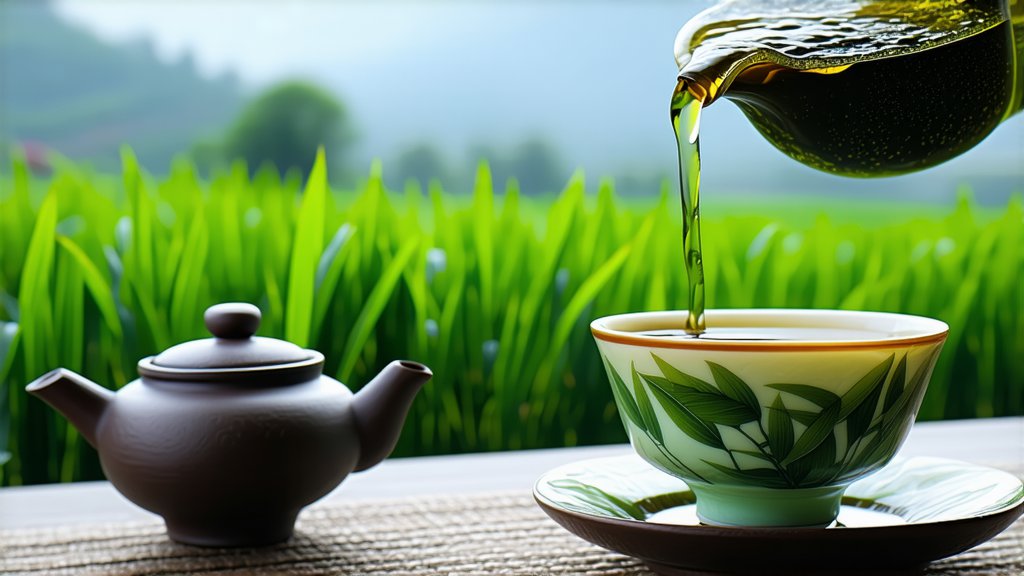
China, a land steeped in ancient traditions and rich cultural heritage, has long been revered as the birthplace of tea. Among the myriad varieties that grace its vast landscapes, Longjing Tea, also known as West Lake Dragon Well Tea, stands out as a paragon of excellence in the realm of Chinese green teas. This article embarks on a journey through the history, varieties, meticulous craftsmanship, and artful appreciation of Longjing Tea, inviting international readers to immerse themselves in the enchanting world of this verdant elixir.
A Legacy Brewed in Legend
Longjing Tea traces its origins back to the Tang Dynasty (618-907 AD), with its name first recorded during the Qing Dynasty. The tea derives its name from the Dragon Well (Longjing) located in Hangzhou's West Lake, a place believed to be the dwelling of dragons in Chinese mythology. According to local folklore, these mythical creatures were so enamored with the purity of the water that they bestowed upon it their divine essence, which infused the surrounding tea plants with unparalleled flavor and aroma. Though rooted in legend, the allure of Longjing Tea is undeniably real, captivating tea enthusiasts worldwide.
Distinct Varieties: A Symphony of Flavors
Longjing Tea encompasses several distinct grades, each reflecting varying degrees of quality and refinement. The highest grade, known as "Xifeng Longjing" or "West Lake Dragon Well," hails exclusively from the hills surrounding West Lake. Its leaves are handpicked before Qingming Festival, ensuring only the youngest and most tender shoots are selected. Following closely is "Yifang Longjing," which comes from the immediate vicinity of West Lake but may include slightly later harvests. "Sanfang Longjing" and "Sifang Longjing" represent broader production areas within Zhejiang Province, where the tea maintains its characteristic qualities albeit with subtle variations due to terroir differences.
Crafting Perfection: The Art of Pan-Frying
The magic of Longjing Tea lies not only in its origin but also in the intricate process by which it is crafted. Unlike other green teas that are typically steamed or oven-dried, Longjing undergoes a unique pan-frying method that imparts its signature flat, sword-like appearance and vibrant green hue. This labor-intensive process involves several stages:
- Fixation: Freshly picked leaves are quickly heated in a large wok over high heat to halt oxidation, preserving their green color and freshness.
- Shaping: As the leaves soften, skilled artisans manipulate them with rapid hand movements, pressing and rolling them against the hot surface until they flatten and elongate, resembling the shape of a well (jing) in Chinese.
- Drying: After shaping, the leaves are further dried to reduce moisture content, enhancing their shelf life without compromising flavor.
- Sorting & Grading: Finally, the tea is meticulously sorted based on size, shape, and quality, ensuring each batch meets stringent standards.
Savoring the Essence: A Guide to Appreciation
To truly appreciate Longjing Tea, one must engage in a mindful tasting ritual that honors its delicate nature. Here's a step-by-step guide to savoring this exquisite brew:
- Preparation: Use water just off the boil (around 80°C/176°F) to avoid scalding the tender leaves. Rinse your teaware with hot water to warm them up.
- Infusion: Place approximately 3 grams of loose leaves per 150ml of water into a Yixing clay teapot or a glass vessel for visual pleasure. Steep for about 1-2 minutes for the first infusion.
- Observation: Admire the transformation of dry leaves into a lively dance within the water, noting their graceful unfurling and the gradual release of emerald-green liquor.
- Aroma: Inhale deeply to capture the tea's subtle fragrance, a blend of chestnut, vegetal notes, and a hint of sweetness reminiscent of springtime.
- Tasting: Take small sips, allowing the tea to coat your palate fully. Experience its smooth texture, balanced bitterness, and lingering aftertaste that signifies high-quality Longjing.
- Multiple Infusions: Reinfusion is encouraged; subsequent steepings will reveal different facets of flavor, from fresh grassiness to deeper umami undertones.
Conclusion
Longjing Tea is more than just a beverage; it embodies centuries of Chinese tea culture, a testament to the harmony between man and nature. Each cup offers a window into the soul of China's tea-growing regions, a chance to connect with a tradition that spans millennia. For those seeking an authentic taste of China's green treasure, Longjing Tea promises an unforgettable journey through its history, diversity, craftsmanship, and the art of mindful enjoyment.